Significant Rise of Armed Clashes in EAO-controlled Regions

The State Administration Council’s (SAC’s) forces and various Ethnic Armed Organizations (EAOs) clashed at least 2,193 times in the eight months between July 1, 2021, to March 20, 2022. The clashes took place in the EAO-controlled areas of Karen, Kachin, Kayah, and Chin States. Among these, at least 1,775 clashes took place in the Karen National Union (KNU) territory. On March 19, the SAC’s air force dropped four bombs on Kwi-Lar and Ta-Kat-Pu villages in the KNU Brigade 3-controlled area, raising tensions significantly.
Sagaing Records Three-Month High in Refugees
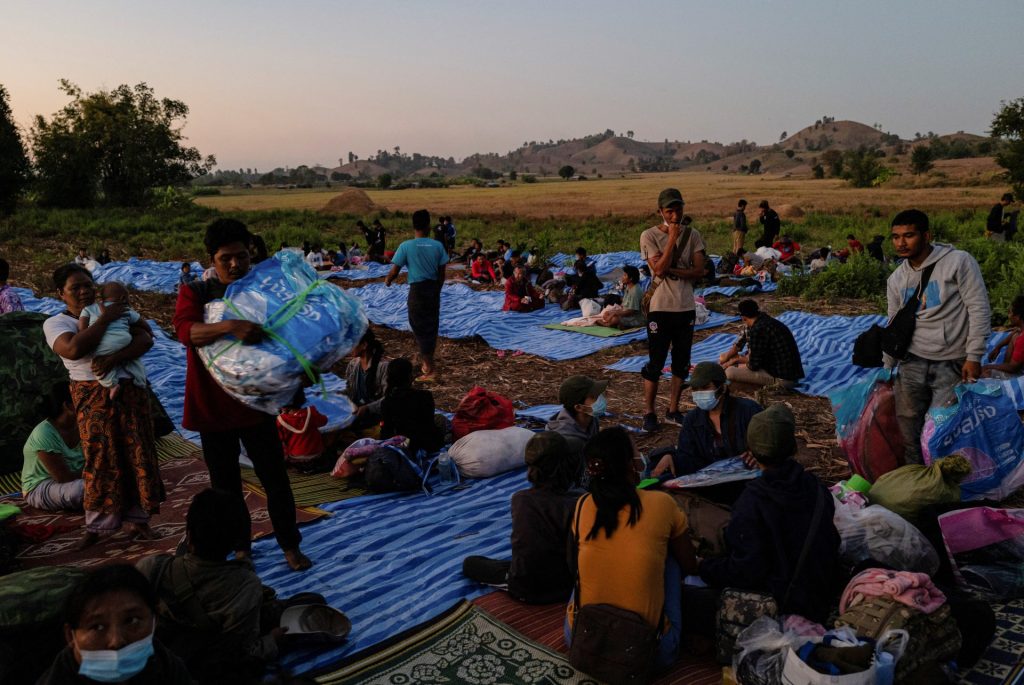
Since the military staged a coup d’état on February 1, 2021, various forms of mass protest against injustice have occurred across Myanmar. Protests are still ongoing in a variety of different forms, including armed conflicts between the ethnic armed organizations (EAOs) and SAC’s forces in ethnic regions where those EAOs are based. Simultaneously, fighting between the People’s Defense Forces (PDF/LDF/CDF/CNDF/KNDF) and SAC’s forces has also erupted in some areas. This has created a growing need for humanitarian assistance as conflicts and clashes have intensified and the number of internally displaced persons has risen.
Over 500 Homes and Buildings Confiscated Nationwide
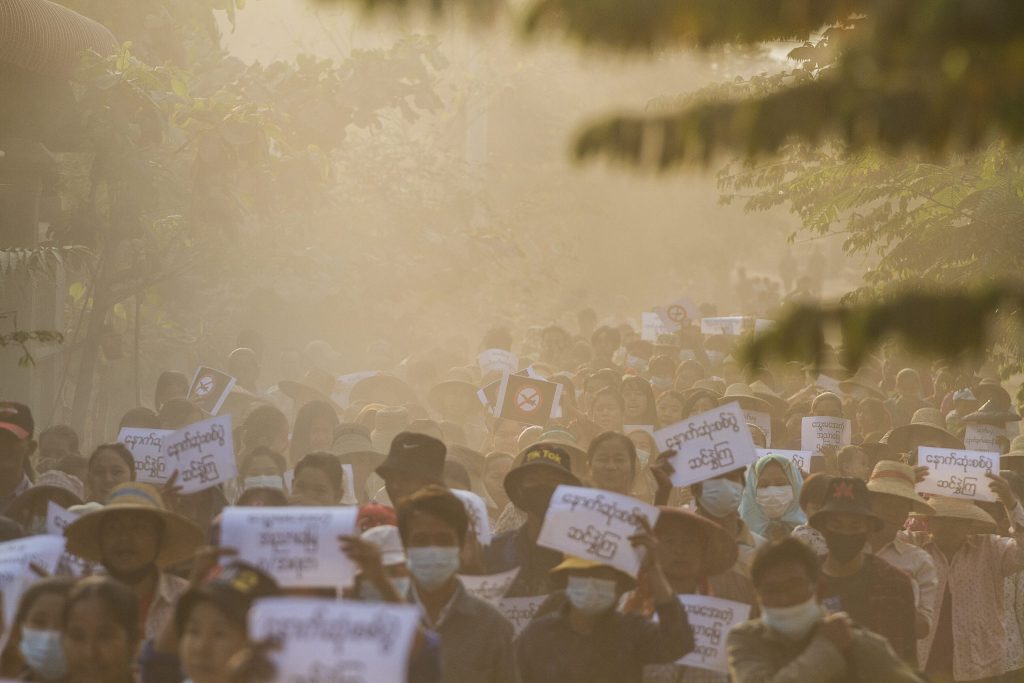
As of March 7, 2022, the State Administration Council (SAC) has confiscated at least 531 homes and buildings (in connection with anti-military activities) in the aftermath of the military coup, according to data compiled by ISP-Myanmar, as well as a separate dataset compiled by the Assistance Association for Political Prisoners (AAPP). Most of the seizures took place in the Sagaing Region, with at least 135 units being seized. Meanwhile, 116 units in the Yangon Region, 85 units in the Mandalay Region, 47 units in the Ayeyarwady Region, and 39 units in the Magway Region were also seized, according to reports. These figures are only based on presently available data, and thus the actual figures may be much higher.
Daily COVID-19 Transmission has Increased to Over 3,000 Cases
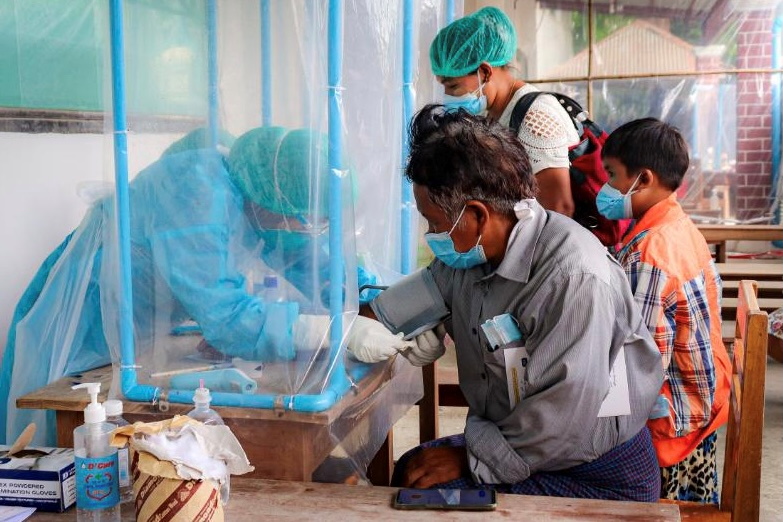
Within 5 days, between February 18, 2022 and February 22, 2022, daily average COVID-19 transmission has increased to 3,000 cases. According to official figures from MoH, COVID-19 transmission has peaked again in five months and the possibility of another wave is now increasingly likely. The Yangon Region is currently the most seriously affected area, with over 12,400 people infected as of February 22, 2022. Nationwide, 38 percent of all COVID-19 cases reported in February 2022 were from the heavily-populated Yangon Region.
Over 9,000 People Detained
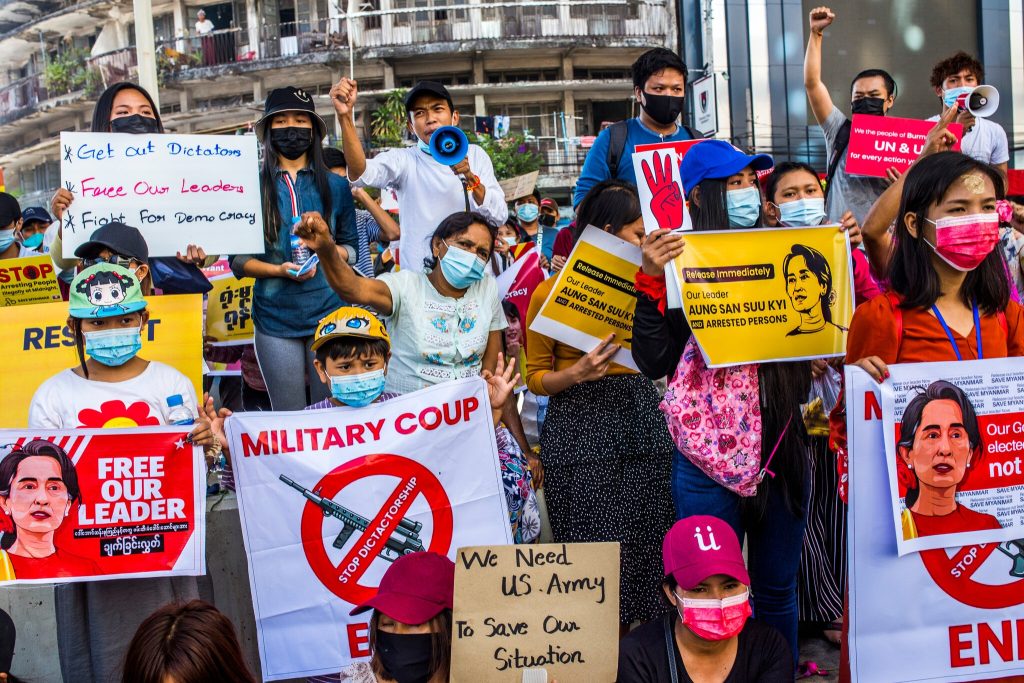
At least 12,000 people have been arrested across the country between February 1, 2021, and February 16, 2022, including members of the National League for Democracy, the Union Election Commission, political activists, and anti-coup protesters. Only about 3,000 have been released so far, while at least 9,000 remain in detention. A statement from the State Administration Council said that more than 11,000 people have been arrested and accused of committing acts of violence.
COVID-19 Transmission Peaks to Record High in Five Months
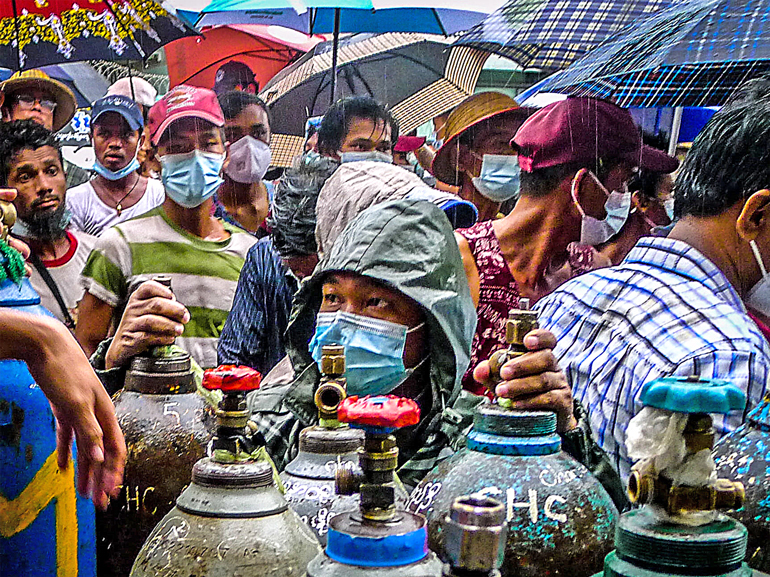
On December 28, 2021, the State Administration Council (SAC) announced the detection of a new variant of the COVID-19 virus, Omicron, in Myanmar. The SAC-controlled Ministry of Health (MoH) has since made 15 announcements regarding the presence of the Omicron variant, with 348 cases latest reported as of February 3, 2022. However, many people have been reported to have shown Omicron symptoms during the first two weeks of February, meaning Omicron is likely to be spreading more rapidly than official statistics suggest.
China Accounts for more than 73 Percent of Foreign Investment

In the aftermath of the coup, more than 73 percent of the foreign investment in Myanmar comes from from China. The remaining 27 percent is split between Japan, Singapore, Thailand and South Korea. Less than a year after the coup, from February 2021 to the end of January 2022, there was over US$ 3.62 billion of foreign investment in Myanmar. However, the total value of foreign investment projects that shut down in that time was approximately US$ 4.06 billion.
Myanmar-China Border Trade Crisis Continues

Of the six designated trade gates on the Myanmar-China border, four have reopened between November 2021 and January 2022. These gates were closed mainly due to COVID-19; this is the largest reopening since their closure. However, restrictions continue to prolong the trade crisis.
